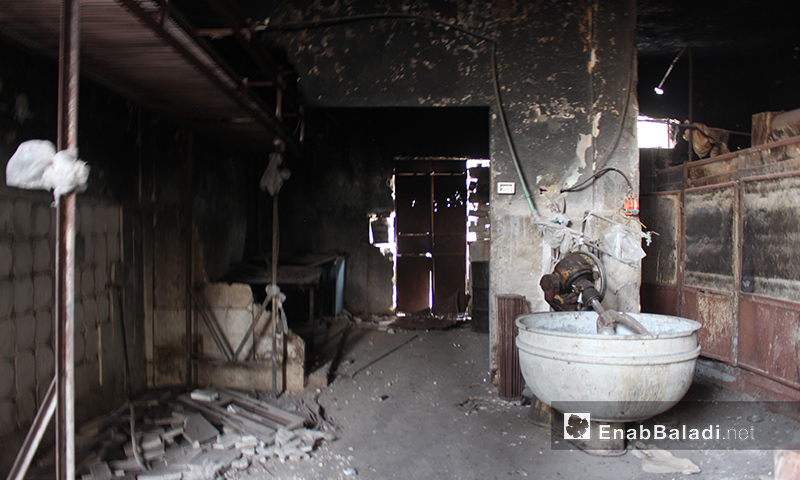



The northern countryside of Homs is living a flour lack crisis for a number of reasons, on top of which is the drought that attacked the area this year, forcing official bodies to demand an urgent support to provide the material as to prevent a potential “humanitarian crisis”.
Shrinking funding, the long periods separating the humanitarian provisions, the inability to depend on the area’s local production of flour are all reasons that contributed to the creation of the area’s crisis, besieged since 2013.
Aids have not been admitted to the area’s towns and cities for the eighth month now, with the exception of al-Dar al-Kabirah, al-Ghantu and Teir Maalah, which received the last portion of relief support on the 4th of last March.
Back then, 6700 flour bags were entered into the three areas, the weight of which is 15 kilograms each.
Flour is available in the area through the connections that some of the area’s merchants have with officers in the areas under the regime’s control, especially the two crossings of al-Dara al-Kabirah and “Khirbet al-Jami” in the north of Aqrab in the southern countryside of Hama, but availability is countered with extravagant prices, for the price of a single bag (25 kilograms) might reach 12 thousand Syrian pounds (each dollar equals 500 Syrian pounds).
| The General Organization for Seed Multiplication offers wheat, barely, and chickpeas; the seeds needed for a strategic harvest in other words. |
In an interview with Enab Baladi, engineer Ahmad al-Kheder, the director of the Seed Multiplication Organization in Homs, affiliated with the Interim Government, said that the northern countryside of Homs has suffered a drought wave that affected large areas of agricultural lands.
The engineer added that the damages has has affected cereals, wheat and barley, pointing that drought has hit the area due to a disruption in rainfall since the end of last March to April 8, with the exception of a limited amount, almost three millimeters in March, according to his estimates.
Al-Kheder explained that drought has affected all the agricultural lands that are rainfed with no expiations, pointing out that the area’s fields have been classified either as total arid fields or fields with intense aridity, as he described them, considering that the current year has resulted in a bad growing season at all levels, relating to both wheat and barley.
Barely was a lot more affected than wheat, according to the engineer, who pointed out that the heavy wind which stormed the area on the 8th of March has burned the top parts of the wheat seeds.
The city of Talbiseh did not receive any humanitarian aid from the “Red Crescent” since July 2017, similar to the other areas in rural Homs. Abudl majeed al-Daheek, the director of the relief office under the city council, said that the city needs 322 bags of flour every day.
He estimated that the city’s people need almost 25 thousand bread bundles every day, pointing out that its population exceeds 75 thousand persons, in addition to 15 thousand in the neighboring town of al-Ghantu, who also get their bread from Talbiseh’s bakeries.
According to al-Daheek, the local council used to depend on the donations of the area’s expatriates to secure flour, stressing that Homs’ local council has not offered donations to the area in years.
He pointed out that flour is available but for high prices, for a person can buy a bread bundle for 600 Syrian pounds, a sum of money that most of the people cannot afford.
Hian al-Khaled, a young man from the northern countryside of Homs, told Enab Baladi that funded bread used to help the people, for the bundle is sold for 150 to 200 Syrian pounds, pointing out that the local councils, which responsibility is to alleviate the people’s suffering and to serve them are lacking funding today.”
| In the area of al-Houla the price of bread bundle is 300 Syrian ponds, to reach 500 Syrian pounds in Talbiseh, while the funded bundle in al-Rastan is sold for 300 Syrian pounds. |
There are not proposed solutions as to assuage the crisis today, but the official entities in the area has called on the international entities to help in solving it, demanding band-aid solution for the near time at least.
if you think the article contain wrong information or you have additional details Send Correction